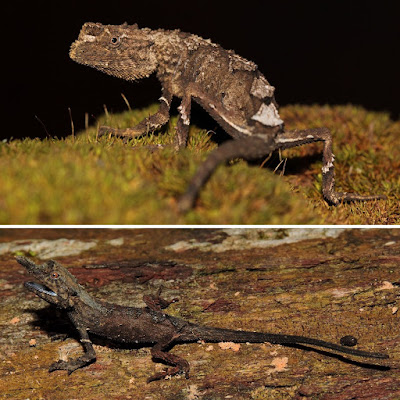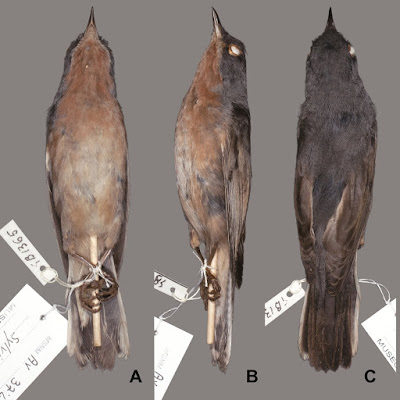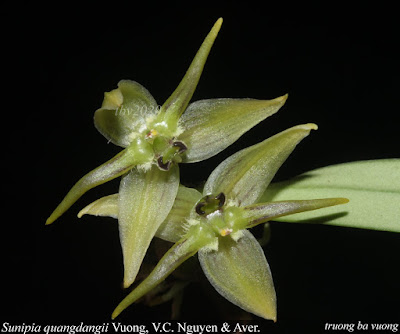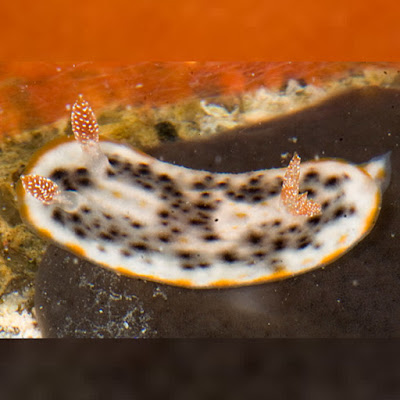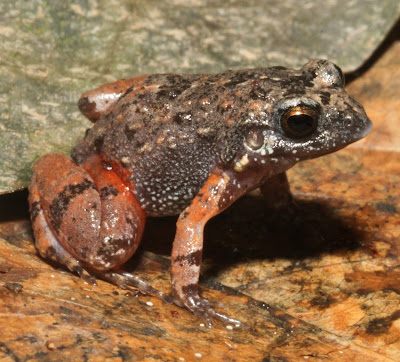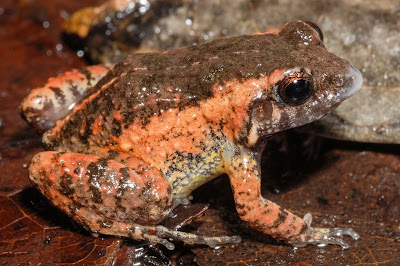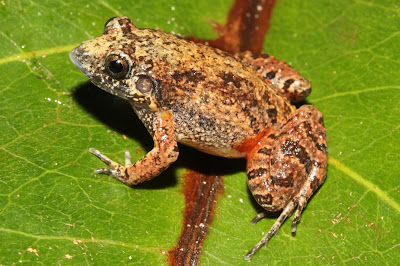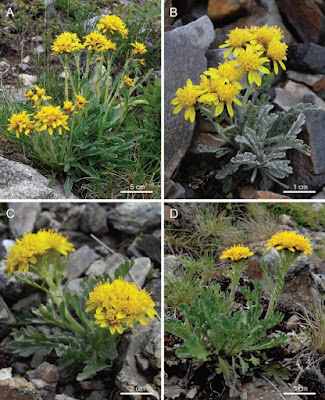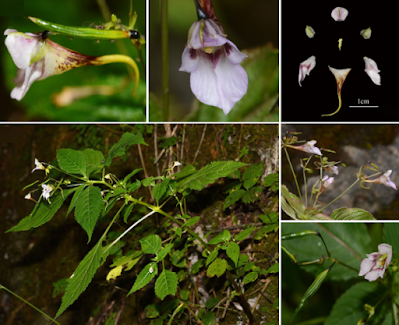[Most Recent Entries] [Calendar View]
Monday, October 5th, 2020
| Time | Event | ||||||||
| 4:11a | [Herpetology • 2020] Ceratophora ukuwelai • A New Species of the Genus Ceratophora Gray, 1835 (Reptilia: Agamidae) from A Lowland Rainforest in Sri Lanka, with Insights on Rostral Appendage Evolution in Sri Lankan Agamid Lizards
Abstract The genus Ceratophora (horn-lizards) comprises six species, all of which are endemic to Sri Lanka. Herein, a new species of Ceratophora is described based on morphological and molecular evidence. The new species is restricted to the Salgala Forest (~300 m asl elevation) in the Kegalle District of Sri Lanka, which is in the northern part of the wet bioclimatic zone. The new species most closely resembles Ceratophora aspera Günther, 1864, but can be distinguished from it by body proportions, number of paravertebral and ventral scales, and ND2 mtDNA data. Complete morphological description of two syntypes of C. aspera are also provided, in addition to a key to the species of genus Ceratophora. The phylogenetic relationships and evolution of rostral appendages in Sri Lankan agamid lizards are discussed in light of new data. According to IUCN Red List criteria, the new species is categorized as Critically Endangered due to its range-restricted habitat. The major threats for this species are habitat loss due to expansion of commercial-scale agriculture and monoculture plantations, as well as illicit forest encroachments. Keywords. Cophotis, Lyriocephalus, mtDNA, ND2, syntype, systematics, taxonomy Ceratophora ukuwelai sp. nov. Diagnosis. The new species is assigned to the genus Ceratophora on the basis of phylogenetic data and by having a rostral appendage developed in males, absent in females; tympanum covered with skin; nuchal crest indistinct; dorsal crest absent; tail not prehensile; gular fold comparatively reduced; and scales on fanks heterogeneous, some scales greatly enlarged. Ceratophora ukuwelai sp. nov. can be readily distinguished from its congeners by a combination of the following morphological and meristic characteristics: rostral appendage complex, comprising several scales; maximum SVL 37.9 mm; trunk relatively long (TRL/ SVL ratio 51.4–52.6%) with relatively short fore-body (SA/TRL ratio 90.2–90.9%); nuchal crest feebly defned; squamosal process present; dorsum with heterogeneous, keeled scales, intermixed with smooth fat scales; almost all scales on head, body, limbs, and tail bearing 1–18 mechanoreceptive pores (in a single scale), each pore with a sensory seta; 5–7 enlarged, keeled scales present on body fanks; nine supraciliary scales; 40–44 paravertebral scales; 72–77 midbody scales; 72–75 midventral scales. The new species is also clearly distinct from all other congeners in ND2 gene sequences (divergence over 9.6%). Etymology. The specifc epithet is a Latinized eponym in the masculine genitive singular, honoring evolutionary biologist and herpetologist Dr. Kanishka Ukuwela (Rajarata University) for his invaluable contribution to biodiversity studies and conservation in Sri Lanka. Suggested common names. Ukuwelas’ Rough-horn Lizard (English), උකුවෙලගේ රළු අං කටුස්සා Ukuwelage ralu-ang katussa (Sinhala). Suranjan Karunarathna, Nikolay A. Poyarkov, Chamara Amarasinghe, Thilina Surasinghe, Andrey V. Bushuev, Majintha Madawala, Vladislav A. Gorin and Anslem De Silva. 2020. A New Species of the Genus Ceratophora Gray, 1835 (Reptilia: Agamidae) from A Lowland Rainforest in Sri Lanka, with Insights on Rostral Appendage Evolution in Sri Lankan Agamid Lizards. Amphibian & Reptile Conservation. 14(3) [Taxonomy Section]: 103–126 (e259). amphibian-reptile-conservation.org | ||||||||
| 10:16a | [Ornithology • 2020] Type Specimens Matter: New Insights on the Systematics, Taxonomy and Nomenclature of the Subalpine Warbler (Sylvia cantillans) complex
Abstract We revise the taxonomy of the Sylvia cantillans complex, a group of phenotypically distinct warblers with mainly parapatric distributions around a large part of the Mediterranean basin. We redefine the species limits using a combination of mitochondrial and nuclear markers and we objectively link available names to the genetically defined lineages by genotyping the surviving type specimens. In addition, the study of archival documents clarifies the exact composition of type series and provides further evidence for the identification of lost types. These results support the recognition of three species-level taxa: Moltoni’s warbler, Sylvia subalpina (north-central Italy, Corsica, Sardinia and the Balearics); the western subalpine warbler, S. iberiae (North Africa, Iberia, southern France and extreme north-west Italy); and the eastern subalpine warbler, S. cantillans, with subspecies S. cantillans cantillans (southern Italy, Sicily) and S. cantillans albistriata (Balkans, Greece, western Turkey). Keywords: species limits, Sylvia cantillans, taxonomy, types
.... In conclusion, we recommend the recognition of three species in this complex: Sylvia subalpina Temminck, 1820 (Moltoni’s warbler), monotypic north-central Italy, Corsica, Sardinia, Balearics Synonyms: Sylvia subalpina Temminck, 1820 Sylvia subalpina inornata Tschusi, 1906 Sylvia cantillans moltonii Orlando, 1937 Sylvia iberiae Svensson, 2013 (western subalpine warbler), monotypic North Africa, from Tunisia to Morocco, Iberia, southern France, extreme north-west Italy Synonyms: Sylvia inornata iberiae Svensson, 2013 Sylvia cantillans (Pallas, 1764) (eastern subalpine warbler), polytypic Sylvia cantillans cantillans (Pallas, 1764) southern Italy, Sicily Synonyms: Motacilla cantillans Pallas, 1764 Sylvia leucopogon ‘Heckeli’ Schinz, 1821 Sylvia leucopogon ‘Heckeli’ Meyer B, 1822 Sylvia cantillans albistriata (Brehm CL, 1855) extreme north-east Italy, Balkans, Greece, western Turkey Synonyms: Curruca albistriata Brehm CL, 1855 Dario Zuccon, Jean-Marc Pons, Giovanni Boano, Giorgio Chiozzi, Anita Gamauf, Chiara Mengoni, Davide Nespoli, Georges Olioso, Marco Pavia, Irene Pellegrino, Marko Raković, Ettore Randi, Hamid Rguibi Idrissi, Moez Touihri, Markus Unsöld, Severino Vitulano and Mattia Brambilla. 2020. Type Specimens Matter: New Insights on the Systematics, Taxonomy and Nomenclature of the Subalpine Warbler (Sylvia cantillans) complex. Zoological Journal of the Linnean Society. 190(1); 314–341. DOI: 10.1093/zoolinnean/zlz169 | ||||||||
| 1:22p | [Botany • 2020] Sunipia quangdangii (Orchidaceae) • A New Orchid Species from southern Vietnam
Abstract Sunipia quangdangii (Orchidaceae) discovered in southern Vietnam (Lam Dong Province, Da Lat City area) is described and illustrated as a new species for science. It is most close to S. pallida but differs in smooth petals, saccate hypochile with erose margin, small triangular side lobes and terete epichile. The new species is also similar to S. andersonii but differs in big size of plant, pseudobulbs and flower, short inflorescence scape and terete epichile shorter than hypochile. The flower of newly discovered plant somewhat resembles to flower of S. saccata, but new species strikingly differs in plant habit and short, 2-flowered inflorescence. Keywords: Sunipia, plant taxonomy, plant diversity, flora of Vietnam, Monocots Sunipia quangdangii Vuong, V.C. Nguyen & Aver. Van Canh Nguyen, Leonid Averyanov, Nghia Son Hoang, Van Son Dang and Ba Vuong Truong. 2020. Sunipia quangdangii, New Orchid Species (Orchidaceae) from southern Vietnam. Phytotaxa. 452(1); 92–98. DOI: 10.11646/phytotaxa.452.1.9 | ||||||||
| 2:23p | [Mollusca • 2020] Adding Stars to the Chromodoris (Nudibranchia, Chromodorididae) Galaxy with the Description of Four New Species
Abstract This paper describes four new Chromodoris species: Chromodoris balat sp. nov., Chromodoris baqe sp. nov., Chromodoris kalawakan sp. nov., and Chromodoris quagga sp. nov. We were able to distinguish 44 species level lineages within Chromodoris, expanding the Indo-Pacific species from 39 species. The phylogeny presented here provides slightly greater resolution of species relationships than do previous studies of this genus. Layton et al. (2018), determined that variable color patterns made it difficult to differentiate in living specimens of distinct species, but we provide some additional stable color characters that potentially help resolve this issue, as well as additional internal features that are useful in species delimitation and correlate with the molecular phylogenetic analysis. Keywords: Mollusca, systematics, Nudibranchia, sea slug, biodiversity, Indo-Pacific, Mollusca
Family Chromodorididae Bergh 1891 Genus Chromodoris Alder & Hancock, 1855 Chromodoris balat Bonomo & Gosliner sp. nov. Etymology. The name Chromodoris balat comes from the Filipino word for blotch or mark. Since the external morphology has strikingly large blotches across the mantle, we wanted to connote that with the name. The word balat in Filipino also comes with a negative connotation associated with birthmarks and means unlucky or misfortunate. Chromodoris baqe Bonomo & Gosliner sp. nov. Etymology. This species is named Chromodoris baqe after the Arabic word for spots, since the entire nudibranch is covered in black spots and looks similar to a cow. Chromodoris kalawakan Bonomo & Gosliner sp. nov. Etymology. This species is named Chromodoris kalawakan after the Filipino word for galaxy, since the coloration pattern looks like stars floating in a space cloud. The lines connecting some of the white dots appear as if astronomers were drawing the constellation patterns between the stars Chromodoris quagga Bonomo & Gosliner sp. nov. Etymology. The name Chromodoris quagga comes from the scientific name of the Plains zebra (Equus quagga). The striped nature of this nudibranch reminded us of the well-known striped pattern that zebras use for disruptive coloration. Lynn J. Bonomo and Terrence M. Gosliner. 2020. Adding Stars to the Chromodoris (Nudibranchia, Chromodorididae) Galaxy with the Description of Four New Species. Zootaxa. 4819(3); 401–435. DOI: 10.11646/zootaxa.4819.3.1 | ||||||||
| 2:38p | [Herpetology • 2020] Systematics and Historical Biogeography of Neotropical Foam-nesting Frogs of the Adenomera heyeri clade (Leptodactylidae), with the Description of Six New Amazonian Species
Abstract A large proportion of the biodiversity of Amazonia, one of the most diverse rainforest areas in the world, is yet to be formally described. One such case is the Neotropical frog genus Adenomera. We here evaluate the species richness and historical biogeography of the Adenomera heyeri clade by integrating molecular phylogenetic and species delimitation analyses with morphological and acoustic data. Our results uncovered ten new candidate species with interfluve-associated distributions across Amazonia. In this study, six of these are formally named and described. The new species partly correspond to previously identified candidate lineages ‘sp. F’ and ‘sp. G’ and also to previously unreported lineages. Because of their rarity and unequal sampling effort of the A. heyeri clade across Amazonia, conservation assessments for the six newly described species are still premature. Regarding the biogeography of the A. heyeri clade, our data support a northern Amazonian origin with two independent dispersals into the South American Dry Diagonal. Although riverine barriers have a relevant role as environmental filters by isolating lineages in interfluves, dispersal rather than vicariance must have played a central role in the diversification of this frog clade. Keywords: bioacoustics, biodiversity, Brazil, distribution patterns, diversification, Dry Diagonal, riverine barriers, South America
Adenomera kayapo, sp. nov. Kayapó terrestrial nest-building frog Etymology: The name kayapo is given as homage to the Kayapó people (sometimes also spelled as Caiapó). The Kayapó is a large group of Jê speaking people living in the south-eastern portion of Brazilian Amazonia. It is thought that the Kayapó, who name themselves mebêngôkre, once inhabited a vast region between the Araguaia and Tocantins rivers, but were pushed westward by the early colonizers in the 19th century (Turner, 1998). The Kayapó are known to be fierce protectors of their rights and lands. Adenomera amicorum, sp. nov. Santarém terrestrial nest-building frog Etymology: The epithet is derived from Latin amica, friend, as a plural noun in apposition. The name is a reference to the members of the ‘Allobates femoralis project’ led by one of us (Albertina P. Lima) throughout Brazilian Amazonia. The research team was out in the field at the type locality of the species when it was first discovered in the early 2000s.
Adenomera aurantiaca, sp. nov. Orange-legged terrestrial nest-building frog Etymology: The epithet is derived from the Latin aurantiacus, the colour orange, referring to the brightly orange-coloured limbs of this species. Such a colour appears to be unique in the genus Adenomera.
Adenomera inopinata, sp. nov. Unforeseen terrestrial nest-building frog Etymology: The epithet is derived from the Latin inopinatus, unexpected, referring to the unexpected discovery of this species in the region of the middle Tapajós River, where two other unnamed Adenomera species described in the present study had already been collected when A. inopinata was discovered (see Fig. 2). Adenomera tapajonica, sp. nov. Tapajós terrestrial nest-building frog Etymology: The epithet is derived from the Tapajós River. The distribution range of A. tapajonica comprises a swathe of land entailing the west bank of the middle-lower Tapajós River, limited to the south of the Amazon River (Fig. 2A). Adenomera gridipappi, sp. nov. Gridi-Papp’s terrestrial nest-building frog Etymology: The specific epithet is a patronymic name for Marcos Gridi-Papp for his invaluable research efforts to advance the knowledge on the anuran vocal system from a functional evolutionary perspective. The honoured scientist trained the leading author of this study in acoustics and vocal anatomy during his Ph.D. program and as part of his current project dedicated to understanding the diversity and patterns of evolution of the acoustic mating signals in leptodactylid frogs. The acoustic characterization of Adenomera frogs has been instrumental to elucidate the species diversity of the genus. Thiago R. D. Carvalho, Leandro J. C. L. Moraes, Albertina P. Lima, Antoine Fouquet, Pedro L. V. Peloso, Dante Pavan, Leandro O. Drummond, Miguel T. Rodrigues, Ariovaldo A. Giaretta, Marcelo Gordo, Selvino Neckel-Oliveira and Célio F. B. Haddad. 2020. Systematics and Historical Biogeography of Neotropical Foam-nesting Frogs of the Adenomera heyeri clade (Leptodactylidae), with the Description of Six New Amazonian Species. Zoological Journal of the Linnean Society. zlaa051. DOI: 10.1093/zoolinnean/zlaa051 Pequeninas rãs recém-descobertas homenageiam indígenas e regiões amazônicas | ||||||||
| 2:54p | [Botany • 2015] Underestimated Diversity in One of the World’s Best studied Mountain Ranges: The Polyploid Complex of Senecio carniolicus (Asteraceae) contains Four Species in the European Alps Senecio carniolicus (Asteraceae) is an intricate polyploid complex distributed in the European Alps (di-, tetra- and hexaploids) and Carpathians (hexaploids only). Molecular genetic, ecological, and crossing data allowed four evolutionary groups within S. carniolicus to be identified. Here, we establish that these four groups (two vicariant diploid lineages, tetraploids and hexaploids) are also morphologically differentiated. As a consequence, we draw taxonomic conclusions by characterizing four species, including the more narrowly circumscribed S. carniolicus (lectotypified here), the taxonomically elevated S. insubricus comb. nov. (lectotypified here), and the two newly described species S. disjunctus and S. noricus. Keywords: Asteraceae; European Alps; polyploidy; Senecio; species nova, Austria, Eudicots Etymology:—The species is named after the historical Duchy of Carniola (Herzogtum Krain, Vojvodina Kranjska) within the Habsburg Empire, which comprised large parts of present-day Slovenia as well as southernmost Kärnten (Carinthia) and Steiermark (Styria). It should be noted that S. carniolicus does not occur in that area (see above under “Type”). Senecio insubricus (Chenevard) R. Flatscher, Schneew. and Schönsw., comb. et stat. nov. Etymology:—The species takes its epithet from a historical region in Northern Italy between Lago di Como and Lago di Garda. The name of the region is connected to the ancient tribe of the “insubres” mentioned by several ancient Roman authors. Chenevard first used this epithet in his description of a novel variety of S. carniolicus. He considered this taxon a possible hybrid of S. carniolicus with the vicariant S. incanus, with a narrowly endemic distribution confined to the Alpi Lepontine and Alpi Orobie. Senecio noricus R. Flatscher, Schneew. and Schönsw., sp. nov. Etymology:—The species takes its name from the province Noricum in the Ancient Roman Empire, which comprised the current Austrian federal states Ober- and Niederösterreich, Kärnten and Steiermark as well as parts of Tirol. Senecio disjunctus R. Flatscher, Schneew. and Schönsw., sp. nov. Etymology:—The epithet refers to the distribution pattern of the species, whose range is split into two disjunct partial areas. Ruth Flatscher, Pedro Escobar García, Karl Hülber, Michaela Sonnleitner, Manuela Winkler, Johannes Saukel, Gerald M. Schneeweiss and Peter Schönswetter. 2015. Underestimated Diversity in One of the World’s Best studied Mountain Ranges: The Polyploid Complex of Senecio carniolicus (Asteraceae) contains Four Species in the European Alps. Phytotaxa. 213(1); 1 – 21. DOI: 10.11646/phytotaxa.213.1.1 | ||||||||
| 3:18p | [Botany • 2020] Impatiens bomiensis (Balsaminaceae) • A New Species from Xizang, China
Abstract Impatiens bomiensis, a new species of Balsaminaceae from Bomi County, Xizang, China, is described and illustrated. This new species is similar to Impatiens fragicolor based on morphological characters and molecular data, but differs in the shape of the lower sepal, the dorsal petal and the number of globose glands at petiole base. Keywords: China, Impatiens bomiensis, new species, taxonomy, Xizang Impatiens bomiensis Y. Y. Cong & Y. C. Peng, sp. nov. Etymology: The specific epithet ‘bomiensis’ refers to the locality of the type specimen, Bomi County, Xizang, China. Yang‐Cheng Peng, Shuai Peng, Ning Yang, Zhi‐Gao Xu and Yi‐Yan Cong. 2020. Impatiens bomiensis (Balsaminaceae), A New Species from Xizang, China. Nordic Journal of Botany. DOI: 10.1111/njb.02761 |
| << Previous Day |
2020/10/05 [Calendar] |
Next Day >> |
